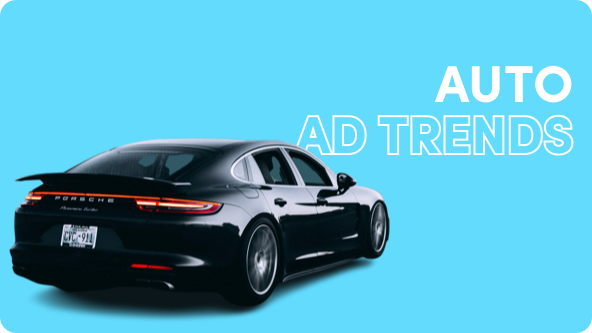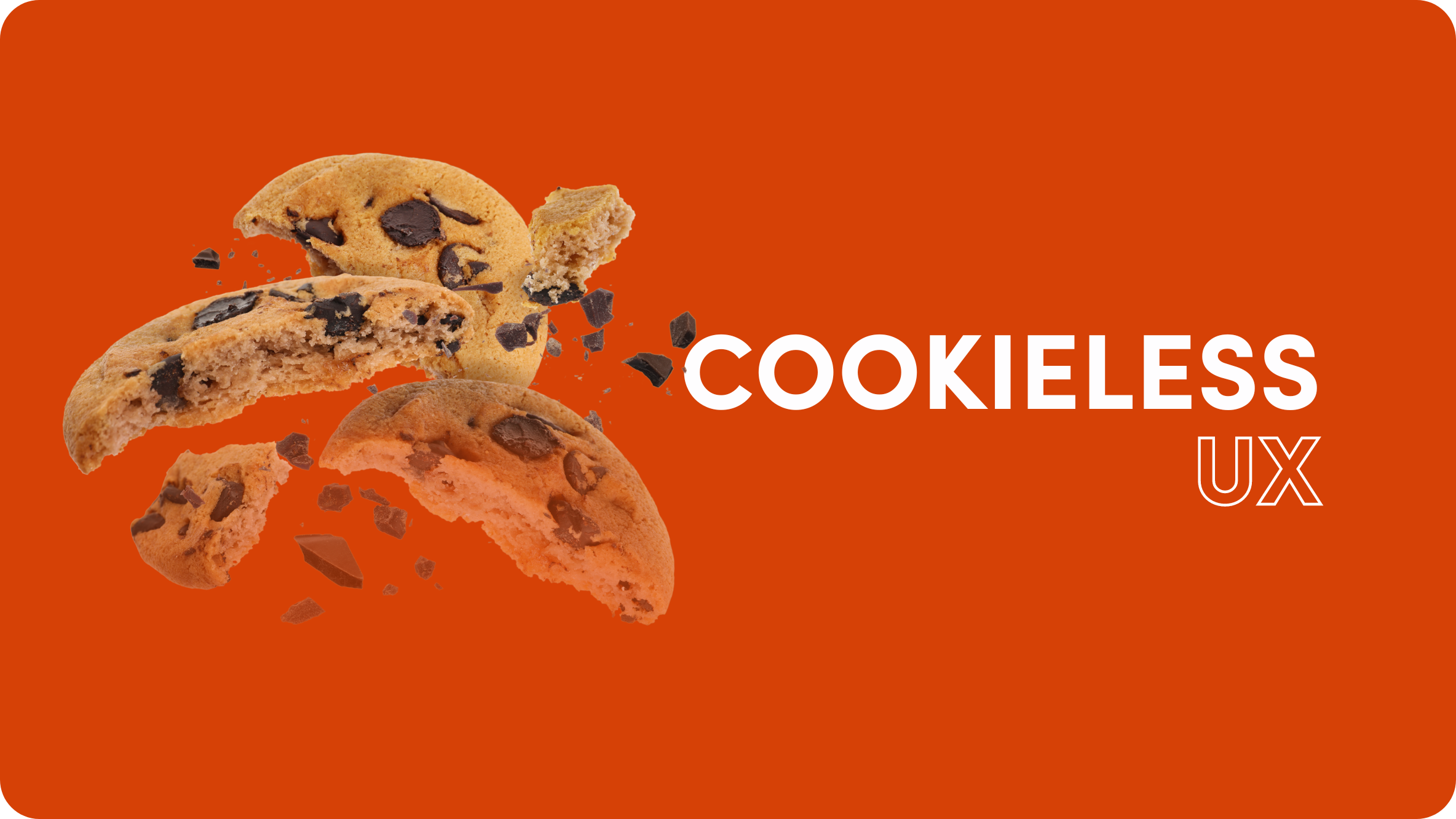Trends in Automotive Advertising: Best Practices to Boost Your Auto Campaigns

Are you looking to make your automotive advertising campaign a well-oiled machine? One that is immune to the bumps and potholes of changeable consumer demand, trends, and other challenges?
As technology accelerates and consumer behavior shifts, it’s more important than ever for automotive advertisers and marketers to stay ahead of the curve. Did you know that 82% of consumers now use online sources for vehicle research before making a purchase decision? That’s a lot of potential customers browsing on the information superhighway, so you’ll want to make sure your campaigns stand out.
We’ve put together an in-depth guide to auto campaign best practices to help you move into the auto advertising fast lane and stay there. So, buckle up and let’s hit the gas on this journey through the world of automotive advertising.
Best Practice #1: Provide highly personalized and targeted advertising
The era of “one-size-fits-all” advertising is on the way out, and in its place, a sleek, tailor-made strategy is coming to the forefront.
Automotive brands are now turning to data analytics and artificial intelligence (AI) to deliver highly personalized and targeted advertising to potential customers. Taking a customized approach by analyzing customer behavior allows you to create ads that are more relevant, engaging, and effective. When done well, this approach should be effective in driving up conversions and sales.
So, how do you personalize your auto campaigns successfully? The personalization process can be broken down into the following steps:
- Know your customer: The main thing to recognize is that no two drivers are the same. Each consumer has unique needs, preferences, and expectations when it comes to purchasing a vehicle. Harnessing the power of data lets you uncover these individual preferences and craft highly targeted campaigns that speak directly to potential customers.
- Leverage data analytics and AI: Data analytics and AI tools can process vast amounts of information, including browsing history, demographics, purchase history, and even real-time location data. This wealth of information allows you to develop a detailed understanding of their audience, segmenting them into distinct groups based on their preferences and behavior.
- Craft tailored messages and creative content: With the insights gained from data analysis, you can create highly tailored messages and creative content that resonate with each audience segment. For example, you may want to target environmentally-conscious consumers with ads promoting your electric vehicle lineup. You can run a simultaneous campaign that targets performance enthusiasts with ads showcasing the latest sports car model.
- Optimize ad delivery for maximum engagement: Personalized advertising enables you to serve ads and messages when consumers are most likely to engage. You can optimize ad delivery based on factors such as time of day, location, and even weather conditions.
Best Practice #2: Immerse consumers in interactive experiences
Interactive experiences are taking the auto advertising world by storm, offering consumers the opportunity to connect with vehicles in new and exciting ways.
The following cutting-edge technology can help you to create immersive interactive experiences that will get them to engage with your brand.
- Mobile apps and online configurators: Apps and configurator tools allow consumers to customize vehicles to their specific needs, from choosing the perfect paint color to selecting the right set of wheels. Helping potential buyers customize their car gives them a sense of ownership and makes them feel more invested in the vehicle.
- Virtual and Augmented Reality: Virtual reality (VR) and augmented reality (AR) technologies are transforming the way consumers interact with vehicles. Immersive 3D experiences allow potential buyers to virtually “step inside” a vehicle, explore its features, and even take it for a virtual test drive – all from the comfort of their own home.
- Live streaming and virtual events: Live streaming and virtual events can be used to offer consumers exclusive access to product launches, behind-the-scenes footage, or expert Q&A sessions and create a buzz around your brand.
- Interactive video content: Interactive videos allow users to click on different areas of the vehicle to learn more about specific features, or choose their own adventure-style videos that showcase various aspects of the vehicle’s performance.
- Chatbots and virtual assistants: Chatbots and AI-powered assistants can answer questions, provide recommendations, and even schedule test drives, creating a seamless and convenient experience for the consumer.
- Gamification and social media integration: Engage people with fun, interactive games or social media challenges that showcase vehicle features or performance. This type of advertising lets people share their experiences with others, increasing your visibility.
Best Practice #3: Emphasize safety features
When planning an advertising strategy, think about what’s important to potential customers. For many drivers, safety is a key concern.
Safety technology is quickly improving, and carmakers can highlight these features in their ads. This shows customers that your brand cares about their safety and well-being.
Here are a few safety features you may consider highlighting in your ads:
- Automatic braking: Imagine you’re driving along, and suddenly, the car ahead of you stops short. With automatic braking systems, your vehicle can detect potential collisions and apply the brakes automatically, helping to prevent accidents and keep you and your passengers safe.
- Lane departure warnings: We’ve all experienced that moment when we unintentionally drift out of our lane. Lane departure warning systems can alert you when this happens, using visual or auditory cues, or even gentle steering corrections, to keep you on track and in your lane.
- Blind spot monitoring: Changing lanes can be nerve-wracking, especially when you’re unsure if there’s a vehicle lurking in your blind spot. Blind spot monitoring systems use sensors to detect other vehicles in your blind spots, alerting you with a visual indicator or an audible warning, so you can change lanes with confidence.
- Adaptive cruise control: Long road trips can be tiring, and maintaining a consistent speed can be challenging. Adaptive cruise control can make the journey smoother by automatically adjusting your vehicle’s speed to maintain a safe distance from the car in front of you.
Best Practice #4: Focus on sustainability
People are concerned about climate change and using natural resources wisely. They want to be eco-friendly, so there’s a growing demand for sustainable cars. Advertisers can attract people by showing that your brand is dedicated to creating a greener future.
Here are some ways you can focus on sustainability in your advertising campaigns:
- Fuel efficiency: Let your potential customers know that your vehicles are designed to go the extra mile without guzzling gallons of gas. This is a win-win as it lets you show your commitment to reducing emissions, as well as saving drivers money at the pump.
- Electric and hybrid models: Electric and hybrid cars are gaining popularity since people want to reduce their carbon footprint. Show off your eco-friendly vehicles, focusing on performance, range, and charging abilities, to demonstrate that being green doesn’t mean losing style or performance.
- Eco-friendly materials: Your commitment to sustainability can extend beyond the engine. Share information about the eco-friendly materials used in your vehicles, such as recycled plastics, sustainably-sourced wood, or vegan leather options.
- Corporate social responsibility: Customers like to support brands with similar values. Let them know about your company’s actions to lessen its environmental impact, like reducing waste, improving energy efficiency, or using renewable energy sources.
Best Practice #5: Tell authentic stories
In the competitive world of auto advertising, it’s not enough to simply tout the features and specs of your vehicles. Consumers crave a deeper, more meaningful connection with brands and the vehicles they drive.
Authentic storytelling that weaves in all of the things mentioned above is a powerful way to engage with your audience. You can build lasting brand loyalty by creating an emotional bond that goes beyond the nuts and bolts of the car itself.
Here are some powerful strategies to incorporate authentic storytelling into your automotive advertising:
- Share real customer experiences: People relate to real-life stories from others like them. Share experiences of actual customers using your cars, telling their personal stories and showing your brand’s impact on their lives. This helps potential buyers imagine themselves driving your car and connects them with your brand.
- Highlight your brand’s values and vision: Each brand has its own special story, including its beginnings and principles. Share your brand’s story and what motivates you to make great cars. Showing the core of your company builds trust and loyalty that goes beyond any one product.
- Deliver emotional and relatable stories: Don’t just talk about the car’s features. Use ads that connect with common emotions and experiences. It could be the happiness of a family trip, the thrill of a new adventure, or the pride in being eco-friendly. This helps customers connect with your brand personally.
- Leverage the power of social media: Social media is great for sharing real stories and connecting with your audience. Ask customers to share their stories, pictures, and videos with your cars, and reply to their posts to show you truly value their experiences.
Rev Up Your Automotive Advertising Campaigns
To stay ahead in the ultra-competitive automotive industry, know your audience and use the latest trends and technologies. In summary, the following approaches will help to boost your auto advertising success:
- personalize ads and content,
- offer interactive experiences,
- focus on safety features,
- highlight sustainability,
- share authentic stories.
Remember, a great car ad campaign addresses your target audience’s specific needs and wants. Use these best practices and keep refining your strategy for the best results.
Outbrain’s full-funnel advertising solution can boost your campaigns, leading to more conversions, sales, and loyal customers. Get started with Outbrain, rev your engines, and see your car ads race ahead to the finishing line.











